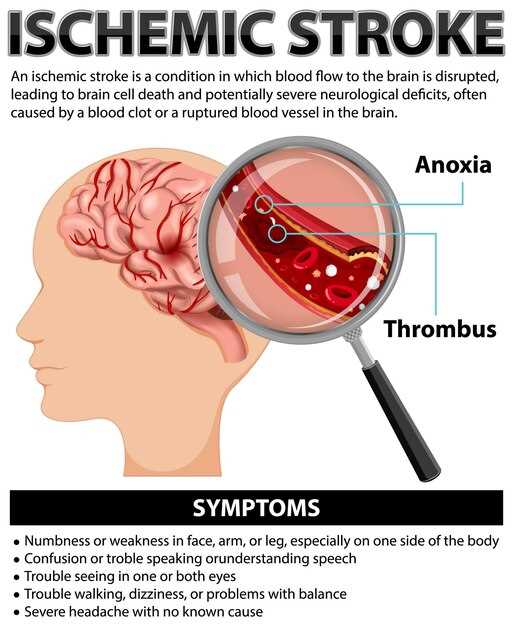
Metronidazole cerebellar toxicity can have serious consequences on your health. This condition may lead to symptoms such as uncoordinated movements, dizziness, and muscle weakness. It is important to be aware of the potential risks associated with this medication and to talk to your healthcare provider if you experience any of these symptoms.
At our clinic, we specialize in helping patients understand the risks and effects of metronidazole cerebellar toxicity. Our team of experts can provide you with personalized care and support to manage this condition effectively. Contact us today to learn more about how we can help you stay healthy and informed.
Overview of Metronidazole Cerebellar Toxicity

Metronidazole cerebellar toxicity is a rare but serious side effect of metronidazole, a common antibiotic used to treat various bacterial infections. The cerebellum is the part of the brain that coordinates movement and balance, and toxicity in this area can lead to significant neurological symptoms.
Symptoms of metronidazole cerebellar toxicity may include dizziness, lack of coordination, trouble walking, and slurred speech. In severe cases, it can result in seizures and difficulty swallowing.
It is important to recognize early signs of cerebellar toxicity to prevent further complications. If you or a loved one experience any of these symptoms while taking metronidazole, seek medical attention immediately.
Symptoms
Metronidazole cerebellar toxicity can manifest in various symptoms that affect the coordination and movement of the individual. Some common symptoms include:
1. Ataxia:
Patients may experience difficulties with balance and coordination, leading to unsteady movements and a staggering gait.
2. Dysarthria:
Speech difficulties such as slurred speech or difficulty in articulating words may occur due to the impact of the toxicity on the cerebellum.
Early recognition of these symptoms is crucial to prevent further complications and ensure prompt treatment for metronidazole cerebellar toxicity.
Recognizing Early Signs
Early signs of Metronidazole cerebellar toxicity may include:
- Unsteadiness: Patients may experience difficulty in maintaining balance and coordination.
- Slurred Speech: Changes in speech patterns, such as slurring or mumbling, may be evident.
- Tremors: Involuntary shaking or trembling of the hands, arms, or legs can occur.
Seek Medical Attention
If any of these early signs are observed, it is crucial to seek medical attention immediately. Early detection and intervention can help prevent further progression of Metronidazole cerebellar toxicity.
Causes
Metronidazole cerebellar toxicity can occur due to the drug’s neurotoxic effects on the central nervous system. This toxicity is thought to result from the drug’s ability to disrupt the normal functioning of nerve cells in the cerebellum, a part of the brain responsible for coordinating movement and balance.
The exact mechanism by which metronidazole causes cerebellar toxicity is not fully understood. However, research suggests that the drug may interfere with the normal metabolism of nerve cells in the cerebellum, leading to cellular dysfunction and damage. This disruption in nerve cell function can result in the development of symptoms characteristic of cerebellar toxicity.
It is important to note that not all individuals who take metronidazole will experience cerebellar toxicity. Factors such as the dosage of the drug, the duration of treatment, and individual susceptibility may influence the risk of developing this adverse reaction.
Understanding the Mechanism
Metronidazole cerebellar toxicity occurs due to the drug’s ability to interfere with the function of the cerebellum, which is the part of the brain responsible for coordinating movement, balance, and posture. The exact mechanism by which metronidazole causes cerebellar toxicity is not fully understood, but it is believed to involve the drug’s ability to disrupt the balance of neurotransmitters in the brain.
Neurotransmitter Disruption
Metronidazole is thought to interfere with the normal balance of neurotransmitters in the cerebellum, which can lead to abnormal signaling between nerve cells. This disruption can result in a range of symptoms, including ataxia, dysarthria, and tremors.
Key Point:
Understanding the mechanism of metronidazole cerebellar toxicity is crucial for effective treatment and management of the condition. Healthcare providers must be aware of the potential risks associated with metronidazole use and monitor patients closely for any signs of cerebellar toxicity.
Treatment
Metronidazole cerebellar toxicity requires prompt and appropriate treatment to prevent further neurological damage. The first step in managing toxicity is discontinuing the use of metronidazole and any other potentially neurotoxic medications. Patients experiencing symptoms of cerebellar toxicity should seek immediate medical attention.
Physicians may prescribe supportive care, such as intravenous fluids, to maintain hydration and electrolyte balance. In severe cases, where neurological symptoms are debilitating, hospitalization and close monitoring may be necessary. Some patients may benefit from physical or occupational therapy to improve movement and coordination.
It is important for healthcare providers to closely monitor the patient’s symptoms and progress to adjust the treatment plan accordingly. With timely intervention and appropriate care, many patients can recover from metronidazole cerebellar toxicity and regain normal neurological function.
Managing Toxicity Effectively
Metronidazole cerebellar toxicity can be a serious condition that requires prompt and effective management to prevent further complications. Here are some key strategies for managing toxicity effectively:
1. Discontinuation of Metronidazole
One of the first steps in managing metronidazole cerebellar toxicity is to discontinue the use of the medication. Stopping metronidazole can help prevent further damage to the cerebellum and improve the chances of recovery.
2. Supportive Care
Providing supportive care to patients experiencing metronidazole toxicity is crucial. This may include monitoring for symptoms, providing medications to manage symptoms such as nausea and vomiting, and ensuring proper hydration.
By following these strategies and working closely with healthcare providers, patients can effectively manage metronidazole cerebellar toxicity and improve their chances of a successful recovery.
Prevention
Preventing Metronidazole cerebellar toxicity is crucial for patients taking this medication. Here are some tips to help reduce the risk:
1. Dose Adjustment:

Ensure that the dosage of Metronidazole is appropriate for the patient’s condition and weight. Avoid high doses unless absolutely necessary.
2. Monitoring Symptoms:
Regularly monitor the patient for any early signs of cerebellar toxicity, such as dizziness, confusion, and unsteady gait. Promptly report any symptoms to the healthcare provider.
Remember: Early detection can lead to timely intervention and prevent severe complications.
By following these preventive measures, patients can lower the risk of developing Metronidazole cerebellar toxicity and ensure a safer treatment experience.
